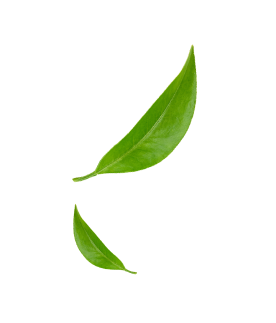Noble vs Tudei Kava
You’ve probably heard of kava. The popularity of kava is growing across the United States. But you may not know that kava grows in two varieties. These varieties are used for different purposes in their indigenous territory of the south Pacific. Even so, one variety is not as safe as the other. That’s why we’re giving you an overview of the kava plant, noble vs tudei kava, where it’s from, how it grows, what it looks like, and how to drink kava safely.
Kava is a word found in many southern Pacific nations and it originates from an ancient word meaning “bitter” and in some locations “root”. Found in the south pacific, the kava plant is said to have originated in Vanuatu. It is believed that Piper Methysticum, the scientific name for the kava plant, evolved through either natural hybridization by the native cultures of these islands or through selected mutation. Its closest relative and likely ancestor goes by the scientific name Piper Wichmannii.
The Morphology of Kava
The kava plant is asexual, meaning it doesn’t reproduce using flowers or seeds. Instead, the kava plant is cultivated using stem cuttings that are harvested from existing kava plants. These are then buried and essentially clone themselves to create new kava plants. Kava stems vary morphologically, or in appearance. The distance between nodes of the stem can be short or long, and the diameter can be thin or thick. Some kava stems are so long and thick that they resemble bamboo.
The Composition of Kava
The part of the plant used for creating the kava drink is the root. Different parts of the root contain different quantities of the psychoactive ingredients in kava called kavalactones. Think of kavalactones as what caffeine is to coffee. 80% of the root weight of the kava plant is made up by the crown roots. These can be harvested for chips. However, despite making up only 20% of the root weight, the lateral roots contain most of the kavalactone content of the kava plant. 
While the kavalactone content of the kava plant generally follows this rubric, there is another component to the kava plant that produces other effects that may be less tolerated. The kava plant can be divided into two varieties: the noble variety and the tudei or “two-day” variety. The noble variety is the variety which is cultivated for consumption by most drinkers in the south Pacific, and it is the variety that is cultivated for sale and sold abroad. The noble variety produces the familiar effect of relaxing the drinker, easing their anxiety and even promoting good sleep. However it takes nearly four years for kava of the noble variety to reach maturity for harvesting. The tudei variety takes notably less time to cultivate, but is higher in what are called flavokavains, and while kava of the tudei variety is known for having stronger effects, it can also produce nasty hangovers that last for, you guessed it, two days. This includes nausea, headaches, and trouble sleeping. It can even cause liver damage.
Conclusion
Knowing the difference between kava varieties can have a long term impact on your health. By making sure you’re aware of which variety you’re being sold and which one you’re consuming, you can mitigate the negative health impacts of the tudei variety of the kava plant. Pure noble kava, peeled and strained properly, can have the favorable effects that we mentioned earlier – relaxation, eased anxiety, and good sleep.
References
Botany of the KAVA Plant. Kava Guides. (2021, August 30). Retrieved September 30, 2021, from https://kavaguides.com/kava-plant/.
Lebot, V., Merlin, M. D., & Lindstrom, L. (1997). Kava, the Pacific elixir: The definitive guide to Its ethnobotany, history and chemistry. Healing arts press.

























































